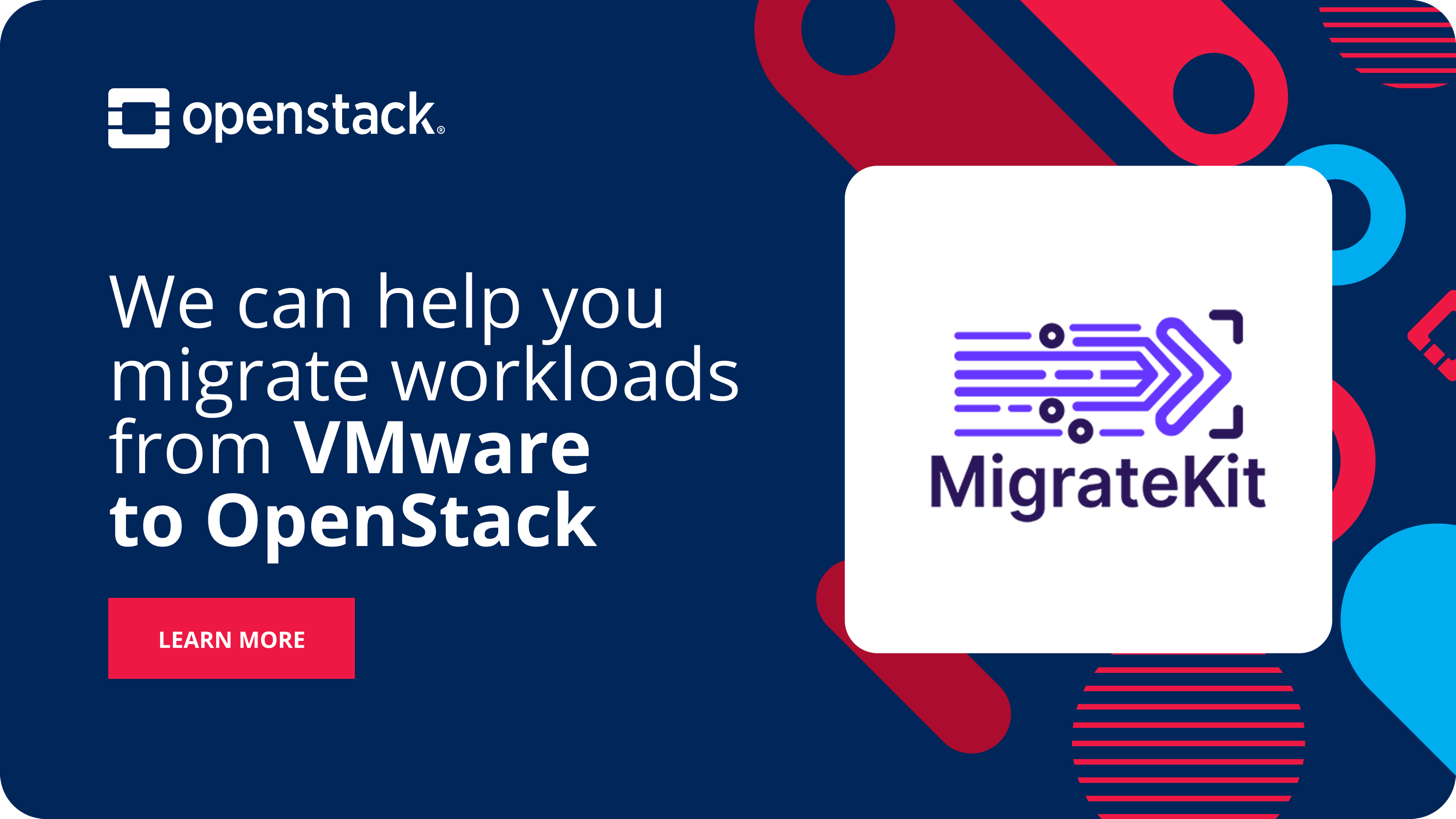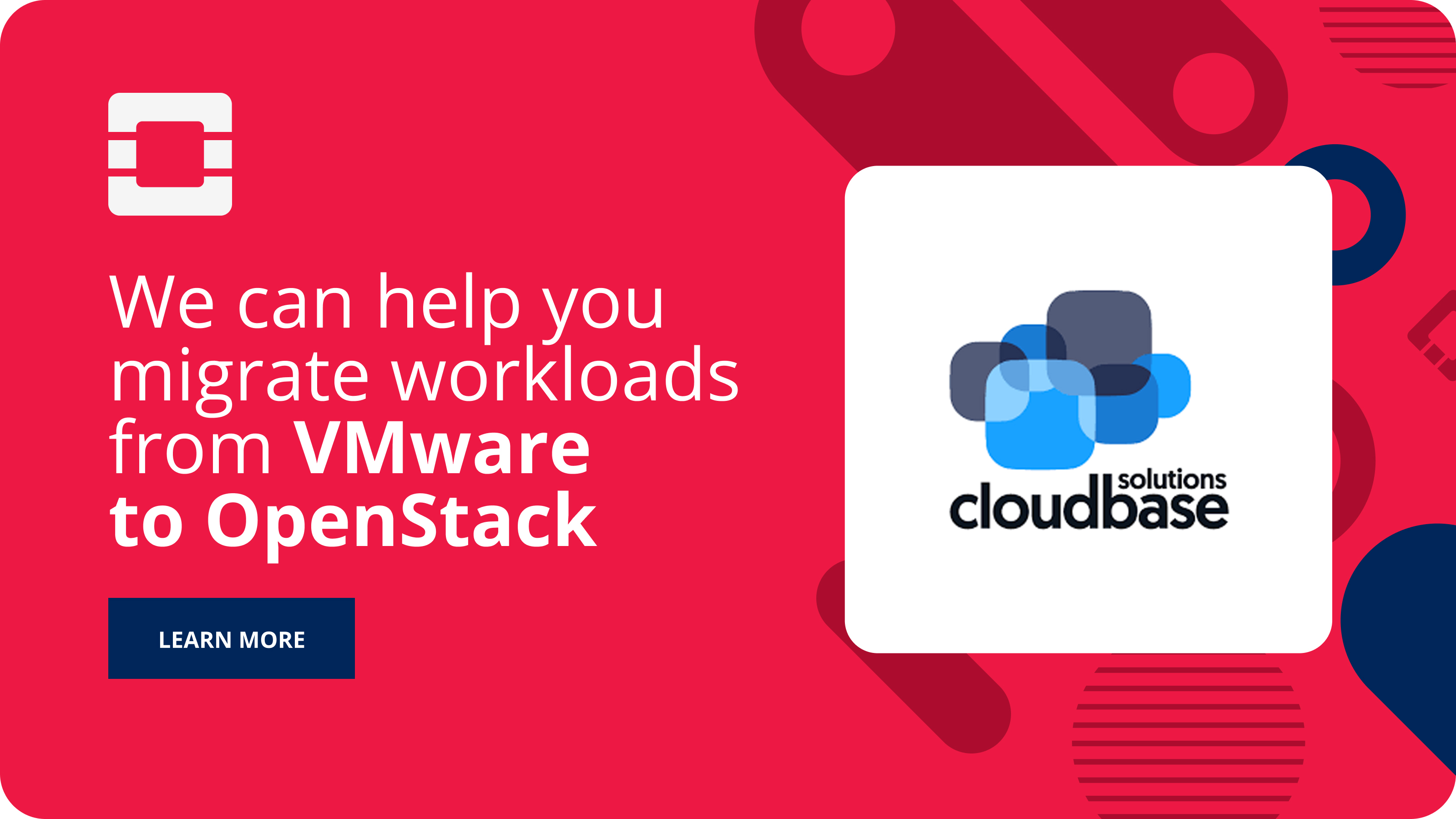Broadcom’s acquisition of VMware and subsequent licensing changes have incentivized organizations around the world to re-evaluate their virtualization strategy. OpenStack, the open source standard for cloud infrastructure, has emerged as a leading alternative. Over 80% of OpenInfra members have already talked to customers about migrating workloads from VMware to OpenStack.
In this series, Superuser is highlighting different distro-agnostic migration tools available to the growing audience of organizations building a new virtualization strategy. Today we’re exploring Migratekit from VEXXHOST.
What are you hearing from customers interested in VMware migration?
Customers from a range of sectors are increasingly considering open-source alternatives to VMware to address high licensing fees, vendor lock-in, and scalability constraints. Many organizations want more control over their infrastructure, seeking solutions that align with their business growth rather than adding complexity and cost.
Our Atmosphere platform has been built from the ground up to be a robust alternative to VMware, providing the flexibility to scale seamlessly from small setups with three nodes to large infrastructures with thousands. It’s designed to support hyperconverged storage, external SANs, or Ceph storage, allowing customers to adopt a tailored solution that fits their specific needs.
Customers consistently report that Atmosphere meets their requirements for agility and efficiency while offering a highly customizable and API-driven environment that can evolve with their demands.
Tell us about your migration strategy, including any custom tooling you have developed.
Our migration strategy emphasizes a streamlined, low-downtime approach for moving workloads from VMware to OpenStack. To facilitate this, we developed MigrateKit, an open-source CLI tool specifically designed for enterprise-grade, near-zero downtime migrations.
Initially, we observed a lack of open-source solutions capable of handling live migrations with the reliability required by large-scale environments. MigrateKit was created to fill this gap, offering flexibility for complex VMware-to-OpenStack migrations by operating in two phases: migration and cutover.
The migration phase in MigrateKit enables users to perform multiple migration cycles, where the first cycle does a full copy of a virtual machine, and subsequent cycles only transfer the incremental changes. This structure allows for efficient online data migration with zero impact on the live VMware workloads.
When ready to transition fully, the cutover phase completes a final sync, powers off the VMware virtual machine, and brings an identical setup online on OpenStack. MigrateKit aligns with OpenStack services, utilizing Cinder for storage, Neutron for networking, and Nova for compute, which ensures seamless integration and automation of resources throughout the process.
MigrateKit is available as an open-source project on GitHub and has been further enhanced by contributions from organizations such as THG, which have used it successfully to migrate their own environments. MigrateKit’s design also allows for straightforward configuration of network mappings, security groups, and custom settings, making it adaptable across various enterprise scenarios.
Tell us about some of your customer success stories.
- THG (The Hut Group) – THG utilized MigrateKit to migrate from VMware to an OpenStack-based infrastructure, achieving significant cost savings and improved flexibility for managing their workloads. After completing the transition, THG contributed code improvements back to the MigrateKit project, supporting ongoing enhancements and benefitting the broader open-source community.
- GEICO – GEICO has implemented MigrateKit to migrate their VMware workloads into an OpenStack-powered environment underpinned by Atmosphere. This migration allowed GEICO to reduce licensing costs associated with VMware while benefiting from OpenStack’s scalability and flexibility. The transition, supported by Atmosphere’s robust infrastructure management capabilities, has resulted in significant savings in both operational expenses and licensing fees.
- Healthcare Provider – A large healthcare provider used MigrateKit to migrate over 500 virtual machines to Atmosphere, leading to a 40% reduction in infrastructure costs. Atmosphere’s scalable architecture, paired with Ceph storage integration, met the provider’s stringent compliance and performance standards while streamlining operational management.
What sorts of challenges have you seen when working with customers to move from VMware to OpenStack?
One of the most common challenges faced by customers during VMware-to-OpenStack migrations is the knowledge gap regarding OpenStack’s operations and architecture. To address this, Atmosphere is delivered as a fully integrated, A-to-Z solution that includes alerting, monitoring, and self-healing capabilities.
This pre-integrated approach enables Atmosphere to “run itself,” significantly lowering the level of OpenStack expertise required for day-to-day operations. Atmosphere’s user-friendly design, with robust automation features, allows customers to transition to an OpenStack environment with minimal need for specialized knowledge and minimal configuration effort.
How are you working with the OpenStack upstream community to ensure OpenStack remains a viable virtualization option?
We are actively engaged with the OpenStack upstream community, contributing to the development of new features and enhancements that improve OpenStack’s scalability, reliability, and suitability for enterprise-level deployments. Our contributions span various OpenStack projects, with a focus on refining deployment automation, orchestration, and operational efficiency. By incorporating feedback directly from customers navigating VMware-to-OpenStack migrations, we help ensure that OpenStack continues to address the needs of organizations seeking a powerful alternative to proprietary platforms.
In addition to contributing code, we support the community by sharing best practices and open-source tools like MigrateKit, which offer standardized, efficient migration solutions. Our work with the community reflects our commitment to making OpenStack a leading choice for virtualization and cloud infrastructure, empowering organizations to adopt an open-source platform that remains adaptable, feature-rich, and future-ready.
- Migrating from VMware to OpenStack with Migratekit - November 19, 2024

)










